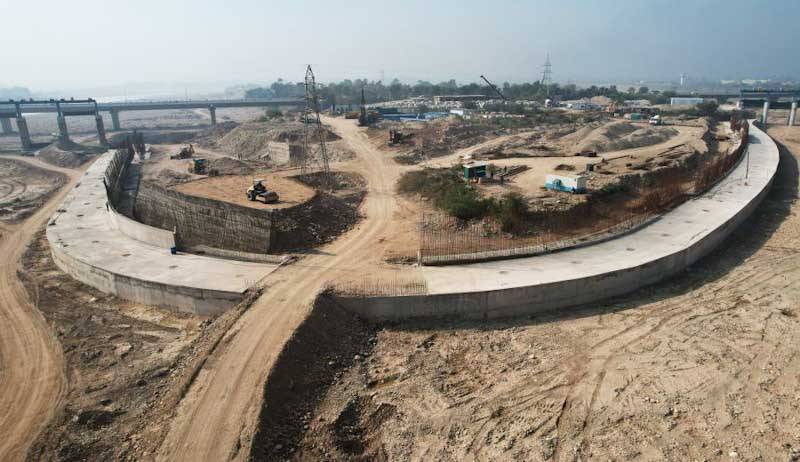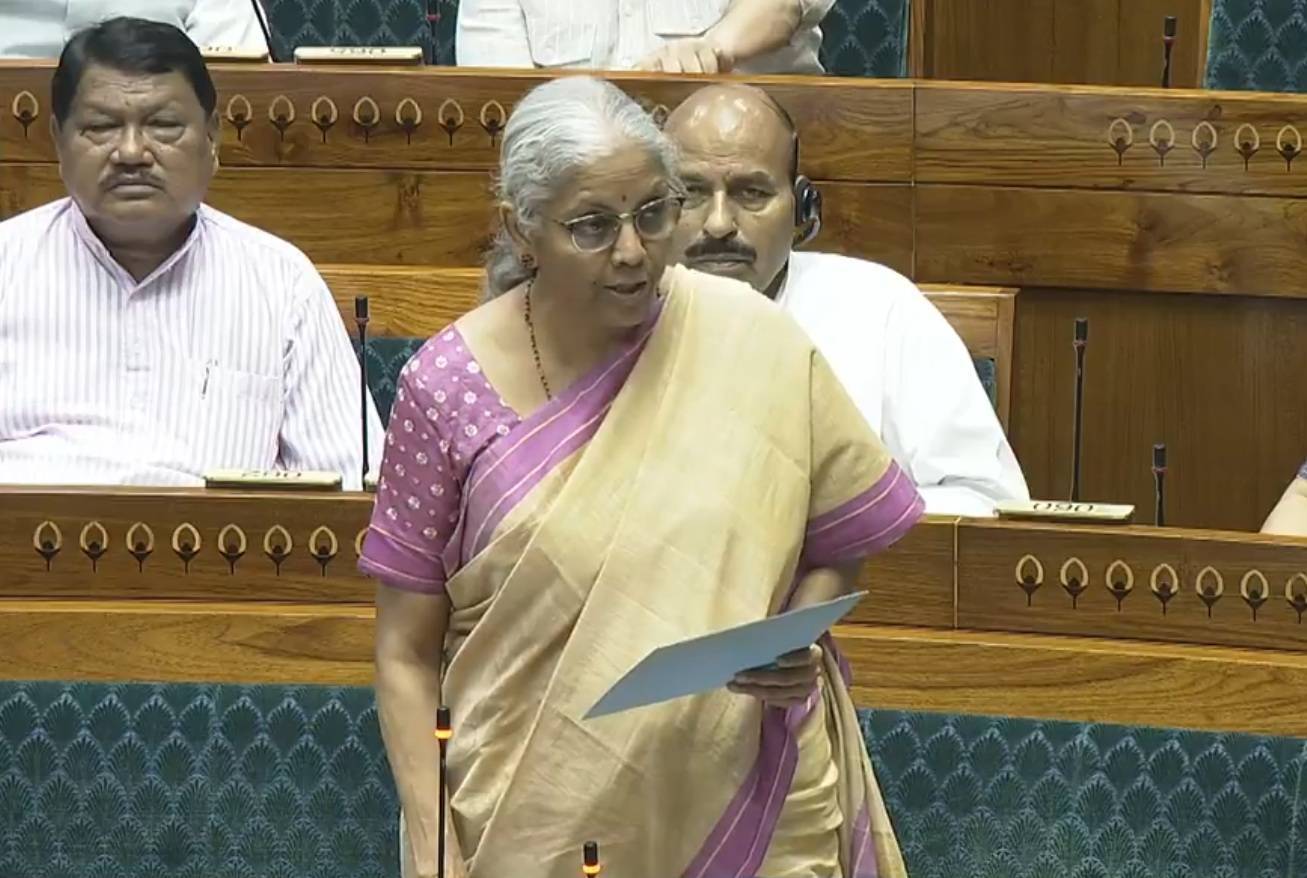Over the last 2-3 years, the real estate sector has seen robust growth across various asset classes led by strong demand and a favourable economic environment. With the full-fledged Union Budget for 2024 just round the corner, the real estate sector is eagerly waiting for policy measures that could determine the sector's trajectory and the likely outcome for the next few years. Indian real estate has continued to remain upbeat during the first half of 2024 across all asset classes, a reflection of prevailing optimism in domestic markets.
Office and residential sector witnessed steady growth, while institutional investments remained sturdy asserting positive business sentiments. Office leasing activity in H1 2024 across the six major markets of the country has already almost touched 30 msf, almost 20% higher than the corresponding period in 2023. Stable interest rates, moderate inflation levels and strong high-frequency economic indicators further supported demand growth across key real estate verticals.
Delivering on the expectations of stakeholders, the Union Budget 2024 has the potential to become a defining moment and can play a crucial role in the sector reaching USD 1 trillion by 2030. Stakeholders’ expectations for Union Budget 2024 are across diverse aspects, and encompass focussed announcements on housing, infrastructure, sustainability, affordability & liquidity enhancement, taxation reforms and regulatory simplification.
“The upcoming Union Budget 2024, under the newly elected government, is set to focus heavily on infrastructure development, a critical aspect for the real estate sector. With the real estate sector expected to contribute 13-15% of the Indian GDP by 2030, stakeholders are hopeful for grant of ‘infrastructure’ status, a long-standing demand. This could significantly ease access to institutional credit and reduce borrowing costs for developers, fostering growth and investments. Additionally, standardisation in definition of affordable housing can improve consistency in financing criterion across institutions and potentially simplify access to credit for interested home buyers within the segment.”, said Badal Yagnik, Chief Executive Officer, Colliers India
Housing sector expected to remain at the forefront during Union Budget 2024
The momentum in residential real estate across major cities has been on the upswing for the last few years. Homebuyers and developers expect further impetus from the government in the upcoming budget. Targeted measures can buoy homebuyer sentiment, providing a demand-side boost and simultaneously alleviate pressing developer concerns, providing a supply-side boost.
Homebuyers’ wish list for budget include:
- Separate & higher deduction for housing loan principal repayment (upto INR 500,000), currently capped at INR 150,000 under section 80C.
- Limit on tax deduction on interest paid should be increased from the current INR 2 lakhs to about INR 4-5 lakhs in case of self-occupied property.
- Extension of tax benefits under 80EEA which was applicable for loans (first time homebuyers in affordable housing segment) availed till March 2022 and increasing the current capping of INR 150,000.
- Standardisation and rationalisation in “Affordable Housing” definition across government schemes and financial institutions can help eligible homebuyers qualify for availing lucrative financing options in the particular category.
- Tax exemption on rental income to boost housing demand especially amongst investors.
- Developers expect tax rationalisation and incentives for green buildings:
- GST reduction on key raw materials such as cement, steel and aluminium will help in controlling project costs.
- Re-introduction of Input Tax Credit (ITC) for under construction properties
- 100% tax holiday for affordable housing projects under Section 80IBA can be re-introduced.
- Increased fund allotment through SWAMIH fund for improving liquidity in stressed residential projects.
- Extension of PMAY timelines beyond December 2024 encouraging greater developer participation in affordable housing segment
- For increased emphasis on sustainable development, tax holiday can be provided for green buildings. Incentivisation of green buildings through minimum alternate tax or tax breaks similar to infrastructure sector will be particularly beneficial.
- For development of senior living facilities, provision of tax-based incentives, relaxation in development charges and other supportive policy measures will provide a thrust to developers and institutional investors to increasingly foray in the segment.
Industrial segment expects supportive government policies and concessional tax rates
Stakeholders expect supportive government policies and higher allocation in infrastructure expenditure to provide a thrust to the industrial and warehousing segment. With government’s continued focus on development of multi-modal logistics parks and logistics corridor, clear governance mechanisms and an enabling environment would be pivotal for successful implementation and timely completion of logistics infrastructure. Improved and effective logistics network can be critical in demand growth for warehousing spaces, particularly in tier I & tier II cities. MSMEs also expect rationalization of GST in the initial years of establishment, subsidized loans and reduction in income-tax slabs. Further, there could be an increase in allocation of funds towards upskilling and vocational training in manufacturing sector which will spur growth in the sector. Key expectations include:
- Rationalization of import-export tariffs expediting India’s integration into global supply chain.
- Rationalization of GST for MSMEs in the initial years of establishment
- Extension of concessional corporate tax rate of 15% for manufacturing start-up companies, which expired on March 31, 2024 to boost manufacturing in the country and support the Make-In-India initiative.
“Infrastructure has consistently been at the core of the budget and this is reflected in the invariable increase in outlay every year. Increased allocations towards infrastructure for increasing connectivity through roads, rail, ports and airports under the aegis of flagship schemes such as National Logistics Policy (NLP) and PM Gati Shakti, are likely to drive significant real estate growth in smaller cities. Moreover, clear governance mechanisms and an enabling environment would be pivotal for successful implementation and timely completion of logistics infrastructure. The overall emphasis on infrastructure can unlock the potential of tier II and III cities, fostering economic growth and urban expansion,” said Vimal Nadar, Senior Director, Research, Colliers India.
Increased budgetary considerations for a sustainable future
Sustainability and green initiatives are becoming increasingly important worldwide, and India's real estate sector is following suit. Promoting investment in green bonds and renewable energy can help India achieve net-zero emissions by 2070 and meet sourcing 50% of energy needs from renewable sources by 2030. The government can consider incentivising users to replace grey hydrogen with green hydrogen, providing incentives for R&D particularly with respect to energy storage and transmission. Other key expectations include:
- Incentivizing investment in green bonds and renewable energy business
- Extended subsidies for EVs under the Faster Adoption and Manufacturing of Hybrid and Electric Vehicles (FAME) scheme, including light to heavy commercial vehicles.
- Production-linked incentives for companies involved in EV charging stations and battery manufacturing. Viability gap funding for startups in battery swapping and on-demand battery technologies.
Enhancing ease of doing business in real estate
The upcoming budget should focus on enhancing the ease of doing business by further reducing compliance burdens. Simplifying the tax and regulatory framework for private equity players, venture capitalists, and start-ups will also help foster a healthy business environment. Key expectations include:
- Reducing excess compliance and adopting a single-window clearance mechanism for new businesses
- Expediting the digitization of land records, especially for industrial and commercial use
Keeping global uncertainties and financial volatilities in mind, overarching measures towards rationalization of taxes and increasing disposable income can be particularly well received. Expectations include measures aimed at easing the tax burden on individuals, possibly through revised income tax slabs, increased deduction limits, or other progressive reforms. Moreover, simplification of capital gains tax regime can also be a welcome move. Further, investments made in REITs can get tax exemption which can provide a thrust to retail investors.
Conclusion
The upcoming budget can build upon the groundwork that has been in progress for the last few years and take actionable measures towards the next phase of economic growth. Infrastructure, construction, and real estate, by virtue of the ripple effect, will continue to support India’s journey in becoming the third largest economy by 2030.
Image source- Pinterest









